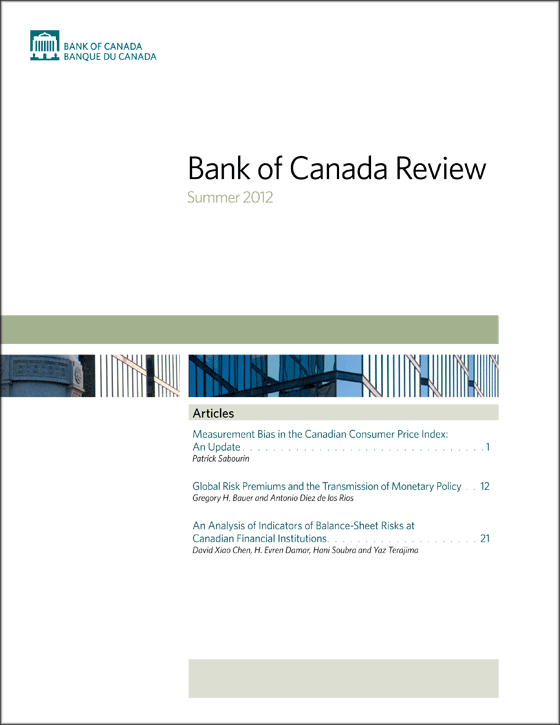Bank of Canada Review - Summer 2012
Available as:
PDF
This issue features three articles that present research and analysis by Bank of Canada staff. The first updates previous Bank estimates of measurement bias in the Canadian consumer price index; the second uses a new term-structure model to analyze the relationship between the short-term policy rate and long-term interest rates; and the third examines indicators of balance-sheet risks at financial institutions in Canada.
